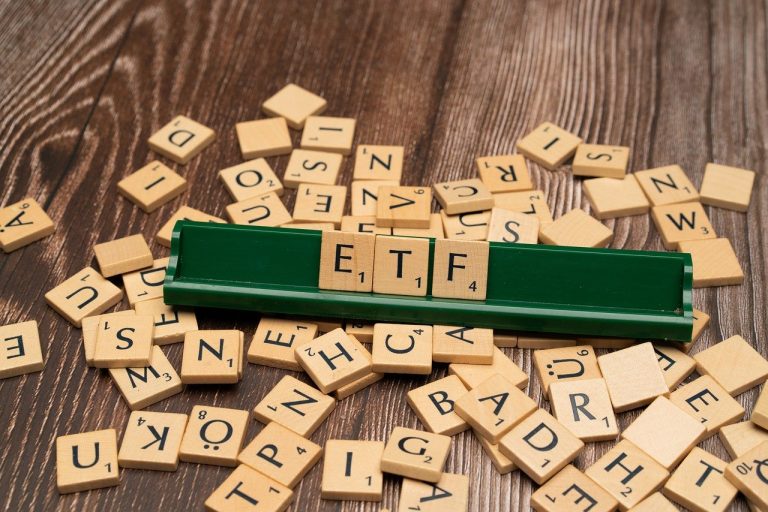What Is An Exchange-Traded Fund (ETF)?
Have you ever wondered about the different ways you can invest your money? ETFs, or Exchange-Traded Funds, might be what you’re looking for. They’re one of the most popular investment vehicles today, offering flexibility, diversification, and cost efficiency.
What Is an Exchange-Traded Fund (ETF)?
An Exchange-Traded Fund, commonly known as an ETF, is a type of investment fund that is traded on stock exchanges. ETFs hold assets such as stocks, bonds, commodities, or a blend of various investment types. You can think of an ETF as a basket of securities that you can buy or sell through a brokerage firm.
Why ETFs Are Popular
One of the primary reasons ETFs are popular is the ease with which you can trade them. Unlike mutual funds, which can be only bought or sold at the end of a trading day, ETFs can be bought or sold throughout the trading day, just like individual stocks.
Types of ETFs
There are several different types of ETFs, each suited for different investing strategies and goals. It’s important to understand each type so you can determine which one fits your investment strategy the best.
Equity ETFs
Equity ETFs invest primarily in stocks. They aim to track the performance of a specific stock index like the S&P 500, Nasdaq, or Dow Jones Industrial Average.
Bond ETFs
Bond ETFs invest in bonds and can be a good way to achieve diversification across a variety of bond types. They aim to provide a regular income stream to investors, though they may also offer capital appreciation.
Commodity ETFs
Commodity ETFs invest in commodities like gold, silver, or oil. These ETFs can be an excellent way to gain exposure to the prices of raw materials and natural resources without directly purchasing the commodity.
Sector and Industry ETFs
These ETFs focus on a specific sector or industry, such as technology, healthcare, or energy. If you believe a particular sector is set to outpace the broader market, a sector ETF might be a good choice.
International ETFs
International ETFs offer you exposure to markets outside your home country. These can focus on specific countries, regions, or even be global in nature.
Inverse and Leveraged ETFs
These ETFs are for more advanced investors. Inverse ETFs aim to produce the opposite return of a particular index, which can be useful in a declining market. Leveraged ETFs aim to amplify the returns of an underlying index, but they also come with higher risk.

How ETFs Work
Understanding how ETFs work can help you make more informed investment decisions. Here’s a look at the mechanics involved.
Creation and Redemption Process
The ETF creation and redemption process involves the ETF sponsor and what are known as Authorized Participants (APs). APs are typically large financial institutions.
Creation: When an AP wants to create ETF shares, they buy the underlying assets that the ETF intends to hold. They deliver these assets to the ETF sponsor and receive an equivalent value of ETF shares in return.
Redemption: If an AP wants to redeem shares, they return the ETF shares to the sponsor and receive the underlying assets in return.
Net Asset Value (NAV)
The value of an ETF is determined by its Net Asset Value (NAV), which is the total value of the underlying assets divided by the number of shares outstanding. NAV is calculated at the end of each trading day.
Tracking Error
This term refers to the difference between the performance of the ETF and the index or benchmark it aims to replicate. Lower tracking errors are generally better, as they indicate that the ETF is closely following its benchmark.
Benefits of Investing in ETFs
Why might you consider adding ETFs to your investment portfolio? Here are some advantages that set them apart from other investment options.
Diversification
ETFs offer you a simple way to diversify your portfolio without needing to purchase a multitude of individual stocks or bonds. This is because each share of an ETF represents ownership in a basket of securities.
Liquidity
ETFs can be bought and sold quickly during trading hours, providing superior liquidity compared to some other investment options. This allows you to react swiftly to market changes.
Cost-Efficiency
Generally, ETFs have lower expense ratios compared to mutual funds. This is partly because many ETFs are passively managed, which requires less intervention compared to actively managed funds.
Transparency
Most ETFs disclose their holdings on a daily basis, allowing you to know exactly what you’re investing in.
Tax Efficiency
ETFs are generally more tax-efficient than mutual funds due to the unique creation and redemption process, which minimizes taxable events.

How to Invest in ETFs
Investing in ETFs is straightforward, but it can be beneficial to follow a systematic approach.
Choose a Brokerage Account
To trade ETFs, you need to have a brokerage account. Most online brokerages offer a user-friendly platform with various tools and resources to help you make informed decisions.
Research and Select ETFs
It’s crucial to do thorough research before selecting ETFs. Consider factors like:
- Investment Goals: Are you looking for growth, income, or preservation of capital?
- Risk Tolerance: How much risk are you comfortable with?
- Time Horizon: When do you plan to need the money?
Place an Order
Once you’ve selected an ETF, you can place an order through your brokerage account. You can choose between different types of orders, such as market orders, which execute immediately at the current market price, or limit orders, which only execute at a specified price.
Monitor Your Investment
Like all investments, it’s important to keep an eye on your ETFs. Regularly reviewing your portfolio can help you make adjustments as needed to stay aligned with your investment goals.
Risks of Investing in ETFs
While ETFs have many advantages, it’s essential to be aware of the potential risks.
Market Risk
Like any security traded on an exchange, ETFs are subject to general market risk, meaning their value can fluctuate based on market conditions.
Liquidity Risk
While most ETFs are highly liquid, some niche or international ETFs may have less liquidity, making it more difficult to buy or sell at favorable prices.
Tracking Error
As mentioned before, tracking error can be a concern. An ETF may not perfectly replicate the performance of its underlying index, which can impact your returns.
Counterparty Risk
While rare, there’s a potential risk that an ETF could face financial difficulties or default, particularly if it uses derivatives or other financial instruments.
Currency Risk
For international ETFs, changes in exchange rates can significantly impact returns. This is an important factor to consider if you’re investing in ETFs that hold foreign assets.

Comparing ETFs to Other Investment Vehicles
ETFs aren’t the only investment option available to you. Comparing them to mutual funds, stocks, and other investment vehicles can provide a fuller understanding of their benefits and drawbacks.
ETFs vs. Mutual Funds
| Aspect | ETFs | Mutual Funds |
|---|---|---|
| Trading | Throughout the day | End of the trading day |
| Minimum Investment | Usually no minimum | Often has a minimum |
| Fees | Generally lower | Higher, especially for active funds |
| Transparency | High (daily disclosures) | Varies |
| Tax Efficiency | Generally more tax-efficient | Less tax-efficient |
ETFs vs. Individual Stocks
| Aspect | ETFs | Individual Stocks |
|---|---|---|
| Diversification | High (basket of securities) | Low (single company exposure) |
| Trading | Throughout the day | Throughout the day |
| Risk | Spread across multiple assets | Concentrated on one asset |
| Research Needed | Less (covers multiple assets) | More (focus on single company) |
| Fees | Generally lower | Varies, but can be high |
Common Misconceptions About ETFs
Despite their popularity, there are several misconceptions about ETFs that could deter you from investing.
ETFs Are Only for Experts
This is far from the truth. While some ETFs are complex and suited for advanced investors, many are designed for everyday investors looking for a simple way to diversify their portfolios.
ETFs Are Risk-Free
Every investment comes with risk, including ETFs. It’s crucial to understand what you’re investing in and how it fits into your broader investment strategy.
All ETFs Are Passive
Not all ETFs are passively managed. Some are actively managed by portfolio managers who make decisions about where to invest the fund’s assets.
ETFs Always Track Their Indexes Perfectly
As mentioned earlier, tracking error can cause ETFs to deviate from their benchmarks, although most well-managed ETFs aim to minimize this difference.
The Future of ETFs
ETFs have been around for a few decades, but they continue to evolve. Innovations like thematic ETFs, which focus on specific trends or themes, and ESG ETFs that emphasize environmental, social, and governance factors, are gaining popularity.
Growth in ESG Investing
With increased awareness around sustainable investing, ESG ETFs are becoming more mainstream. They offer a way to align your investments with your values by focusing on companies that meet certain ethical criteria.
Thematic ETFs
Thematic ETFs target specific investment themes like technology, healthcare innovation, or renewable energy. These can offer you opportunities to invest in emerging trends.
Blockchain and Cryptocurrency ETFs
As blockchain technology and cryptocurrencies gain acceptance, ETFs focusing on these areas are being launched. These provide a way to invest in this burgeoning field without directly purchasing individual cryptocurrencies.
How to Choose the Right ETF for You
Selecting an ETF can seem daunting given the wide array available. Here are some tips to help you make an informed decision.
Assess Your Investment Goals
Consider what you want to achieve with your investment. Are you aiming for growth, income, or capital preservation? Your goals will guide your choice.
Analyze the ETF’s Holdings
Review the top holdings of an ETF to ensure they align with your investment objectives. Most ETFs provide this information on their website.
Check the Expense Ratio
Lower expense ratios can mean higher net returns for you, especially over the long term. Always compare the expenses of similar ETFs.
Performance and Tracking Error
Review the ETF’s historical performance and its tracking error. While past performance doesn’t guarantee future results, it can provide insights into how well the ETF has met its objectives.
Liquidity and Trading Volume
ETFs with higher trading volumes tend to have better liquidity, making it easier for you to enter or exit positions without significantly impacting the price.
Read the Prospectus
The prospectus will provide essential information, including the ETF’s investment objective, strategies, risks, and costs. This can give you a comprehensive understanding of what you’re investing in.
Conclusion
Exchange-Traded Funds (ETFs) offer a dynamic and flexible way to enhance your investment portfolio. With their diverse range of options, cost efficiency, and simplicity, they cater to both novice and seasoned investors. By understanding the intricacies of ETFs, from their various types to their inherent risks, you’ll be better equipped to make informed investment decisions. Whether you’re seeking growth, income, or diversification, there’s likely an ETF that aligns with your financial goals. Remember, thorough research and regular monitoring are key to reaping the benefits of this popular investment vehicle. So, why not consider ETFs as a valuable addition to your investment toolkit?







